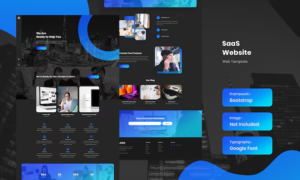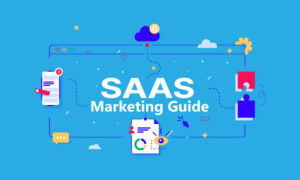Vertical SaaS is changing how industries operate by providing customized software for their needs. For example, it improves patient care in healthcare and supply chain management in manufacturing. Vertical SaaS software is tailored to each industry’s requirements and brings advanced capabilities not found in generic software solutions.
This article examines how vertical SaaS transforms sectors like insurance, banking, healthcare, manufacturing, retail, and education. By matching software capabilities to industry needs, it is enabling digital innovation across these fields.
Read on to learn how this emerging model optimizes processes and fuels growth for diverse businesses.
Understanding Vertical SaaS
Vertical SaaS takes a niche approach, not a one-size-fits-all strategy. It concentrates on meeting the needs of specific industries.
For example, healthcare vertical SaaS is customized for healthcare workflows, data, and compliance rules. It is tailored to fit the healthcare industry’s particular requirements, Or take the case of the fire protection industry. This vertical SaaS would need customized fire inspection software, with specific requirements on compliance, on-field tasks, and policies of each different jurisdiction.
Vertical SaaS also provides focused solutions for:
- Financial services, aligned with banking and finance regulations
- Insurance, tailored for processing claims and managing risk
- Hospitality, customized for guest services and property management
This tight industry focus allows vertical SaaS to build deeper industry expertise and offer more customization compared to horizontal SaaS. It delivers solutions crafted for each industry’s unique needs and challenges.
Why Vertical SaaS is Thriving
Several key factors are fueling the rapid growth and success of vertical SaaS solutions:
Meeting Industry-Specific Needs
Vertical SaaS is tailored to the unique workflows, challenges, and regulations of individual industries. This leads to better efficiency and effectiveness compared to one-size-fits-all horizontal solutions. Healthcare, finance, insurance, manufacturing, and other verticals are adopting vertical SaaS to improve compliance and optimize industry-specific processes.
Driving Higher ROI
Vertical SaaS can maximize the ROI on software investment by integrating with existing industry tools and systems. Seamless integrations also enable smoother workflows and operations within individual sectors. The focused approach of vertical SaaS delivers more targeted value.
Stronger Competitive Positioning
Through specialized expertise, vertical SaaS providers can establish a competitive edge in niche markets. With tailored solutions for specific industries, they face less competition than crowded horizontal SaaS, which leads to lower customer acquisition costs and the ability to serve overlooked segments. No-code platforms like Bubble also boost vertical SaaS innovation. These tools empower non-technical experts to build prototypes aligned with their industry’s needs.
Increasing Demand for Specialization
Many industries are now recognizing the limitations of generic horizontal solutions. As demand grows for tailored software across verticals, specialized solutions providers stand to benefit greatly. First movers in vertical SaaS can leverage this trend to cement leadership in their target markets.
Capitalizing on Market Gaps
New and untapped segments within industries present an opportunity for vertical SaaS vendors. By focusing deeply on specific verticals, they can identify and fill gaps in the market. Specialization also enables them to meet emerging industry needs ahead of generic software providers.
In summary, vertical SaaS is thriving based on its specialized value, competitive differentiation, rising demand, and the opportunity to capitalize on segment-specific market gaps within industries. The vertical approach aligns software capabilities with precise industry needs.
The Impact of Vertical SaaS on Various Industries
Insurance
Vertical SaaS is transforming the insurance sector by enabling carriers to improve efficiency and personalization. Specialized solutions like policy administration systems and customer data platforms help insurers simplify product development, underwriting, and customer engagement processes.
Claims management platforms and document management software built for insurance workflows also provide key capabilities. The former improves claims handling, while the latter helps manage high volumes of paperwork more seamlessly.
Overall, purpose-built insurance SaaS solutions help carriers to boost productivity, make data-driven decisions, comply with regulations, and deliver superior customer experiences end-to-end.
Financial Services
Vertical SaaS enables the digital transformation of financial services like banking, investments, and insurance. Specialized platforms help these institutions offer new products faster and improve customer experiences.
Core banking, policy administration, wealth management, and lending platforms make innovating easier. Regulatory and security solutions like KYC systems, cybersecurity tools, and compliance software help mitigate risks, detect fraud, and avoid penalties.
These tailored financial SaaS capabilities enable banks, credit unions, investment firms, and insurance companies to operate more efficiently while following regulations.
Healthcare
Vertical SaaS optimizes patient care and provider operations through targeted solutions in healthcare. Electronic health records integrate patient data to improve coordination and access to medical histories. Telehealth platforms enable convenient virtual care, while revenue cycle management systems simplify billing processes.
Patient portals also increase engagement by allowing patients to communicate directly with doctors and view their test results and records. By tapping into these customized offerings, hospitals, clinics, insurers, and telehealth providers can boost access, streamline workflows, reduce errors, and improve patient outcomes.
As healthcare delivery becomes more tech-enabled, vertical SaaS adoption will continue growing across the patient journey.
Manufacturing
For manufacturing, purpose-built SaaS boosts efficiency, agility, and insights. Manufacturing execution systems provide real-time production data to spot bottlenecks. Inventory management solutions connect suppliers, warehouses, and retailers to optimize stock levels.
Quality management systems perform automated checks and generate reports to drive preventive improvements. These tailored manufacturing platforms increase output, lower costs, reduce waste, and improve quality control.
As production facilities get more connected, manufacturing SaaS adoption will keep growing. The data analytics abilities of these solutions are essential for smart factories and digital transformation.
Retail
Vertical SaaS is changing retail with connected omnichannel experiences and efficient operations. Order management systems provide real-time inventory visibility across channels, enabling accurate order filling. POS systems tailored for retail combine checkout, inventory, promotions, and reporting tools.
Customer data platforms create unified customer profiles to personalize engagement across touchpoints. Supply chain optimization aligns inventory amounts to predicted demand. These customized retail SaaS solutions help improve customer experiences, optimize stores and warehouses, reduce out-of-stock, and increase productivity.
As consumers expect seamless omnichannel shopping, the adoption of purpose-built retail SaaS will continue to grow. Vertical SaaS gives retailers the specialized tools to innovate and succeed today.
Education
Vertical SaaS simplifies administration and improves learning for K-12 and higher education. Student information systems help manage enrollment, scheduling, attendance, grading, and other key processes. Learning management systems deliver and track online learning materials and student progress.
Education ERP platforms provide integrated management of school finances, human resources, and assets. These tailored education solutions give administrators and educators the tools to manage complex school operations, letting them focus on student outcomes. The ability to scale while meeting unique needs makes vertical SaaS essential for digitally-powered education.
Conclusion
The rise of vertical SaaS signals a new wave of tailored software solutions that are transforming industries. Vertical SaaS aligns closely with the specific needs of individual sectors.
As digital transformation accelerates across industries, companies using vertical SaaS can gain greater productivity, efficiency, and competitiveness. With capabilities customized to each industry’s unique requirements, the strategic value of purpose-built vertical SaaS will keep growing worldwide.



































